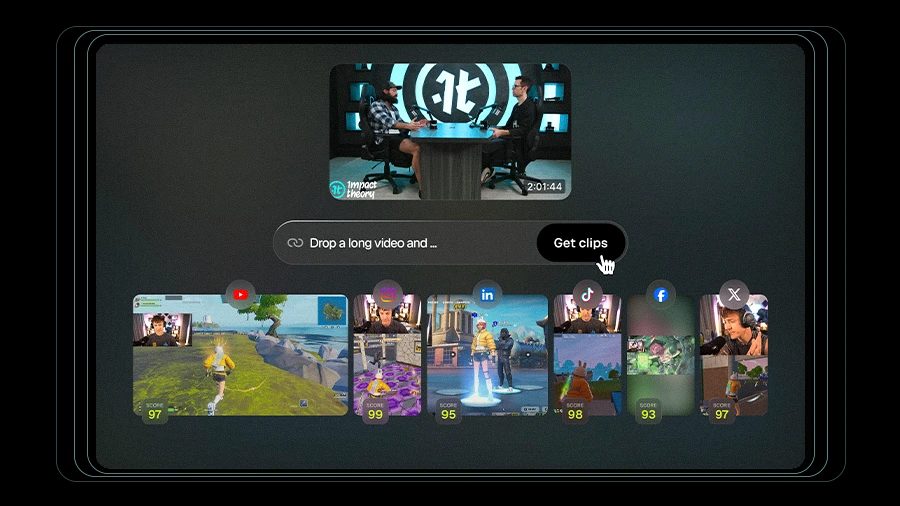


As audience attention fragments, video clipping offers marketers a powerful new way to create viral content and gain efficiency.
Dakota Rae Lowe, a VP of Social Strategy at Edelman, explains how this former niche tactic is now a core marketing strategy.
This strategy combines AI tools with human artistry for storytelling, offering significant cost savings while demanding clear ethical disclosures.
Clipping, a once-niche creator strategy, is moving from the fringes to the mainstream of modern marketing. As the "Peak TV" era ends, a growing number of marketers are chopping up long-form content into short, social-native videos to capture fragmented audience attention. Now, what was once an off-the-books creator practice is being professionalized with formal budgets, AI tools, and performance-based contracts.
Dakota Rae Lowe, VP of Social Strategy at Edelman, offers an insider perspective on the booming world of video clipping. An award-winning strategist, Lowe is known for pushing boundaries. She helped modernize Fruit of the Loom's social presence and even won the first-ever TikTok-only AOR during her time at GSD&M. Today, she leads social media strategy for global clients like Unilever and Hawaii Tourism.
Lowe breaks the trend down into two entry points. First, brands can hire specialist "Clippers," often young, platform-fluent creators paid on performance. Or, they can adopt clipping as a "creative treatment," using AI-powered tools like Opus Pro or Descript to accelerate their own content workflow. The strategy’s breakout moment came when B2B fintech company Ramp used clippers for a major brand activation, showing its power to the wider marketing world. "Clipping was this cottage industry where people have been doing it off book for a while. But Ramp brought it to marketing LinkedIn, and now people are taking notice of how they can use this for themselves," she says.
The arbitrage opportunity: The real story isn’t just the logistics of clipping, but how much value clipping can bring to an organization. Lowe’s analysis frames it as a direct challenge to traditional ad spending. "Clippers are paid one to three dollars per CPM, while the average for a CPG brand may be seven or eight dollars. They can achieve scale and get more views, but it's also cheaper. You could replace part of your ad budget with clippers for that efficiency, knowing your CPMs could be half of what you're currently paying, or even less," she explains.
Magic and murkiness: The catch? As with any grassroots trend, the gold rush carries risks. Lowe acknowledges a future concern for "'brand ick'"—her term for when mainstream adoption makes a trend cringe—but argues the industry is still early in the brand bell curve. For her, a more immediate pitfall is the legal and ethical complications of undisclosed partnerships. "Since I started writing about this, I've had conversations behind closed doors about the results brands are seeing. It's not a public conversation. It's like the magic of the dark arts happening behind the scenes. That creates a murkiness because many of these posts aren't disclosed with #ad, and that's something we need to figure out as an industry," she cautions.
A line in the sand: For Lowe, it's about safeguarding brand integrity and ensuring sustainable, trustworthy engagement in an increasingly scrutinized digital landscape. "If I were to use this for one of my brands, it would have to be approached legitimately. There must be disclosures. There must be #ad. If we're paying someone to talk about a product, it needs to be disclosed. I am not messing with the FTC," she emphasizes.
So how do brands navigate these risks? One effective workflow uses AI for speed and human artistry for soul. As Lowe explains, a human should provide the strategic input, AI generates the rough cuts, and a person refines the final story. The best practitioners should think like writers, operating under a new hybrid role for the modern creative that's part tinkerer and scientist. "AI is good at picking up story beats, but it can't do what the best clippers do, which is think like writers. They understand the emotional hook needed at the start to truly grab people. An AI tool can generate four clips and save you time, but someone still has to finesse them, looking for that emotion and that story. You need that human touch to get the edit right so it will hit," Lowe outlines.
Effectiveness over aesthetics: The debate around AI-generated content is complicated by a generational divide in media literacy. That “uncanny valley” feeling is subjective, creating a sharp tension between the taste of industry insiders and what’s proven to work on the mass market. The situation forces a difficult question for strategists: should they follow the aesthetic tastes of their peers, or the hard data of what’s effective for their audience? "People on marketing LinkedIn were up in arms about Coca-Cola's AI slop ad last year, but the company did it again because it worked. It's always the balance of the taste amongst our industry and then what is the mass market actually responding to and what's effective in driving those metrics. If it is AI, then it's AI," Lowe observes.
In her view, the seemingly radical approach simply reaffirms the fundamentals of advertising. Platforms and algorithms change, but the principles of what makes a story resonate are constant. For marketers nervous about this new terrain, Lowe maintains that the skills they already have are the ones that matter most. "Platform-native approaches will always change. But what gives me hope are the core, soft-skill fundamentals of storytelling: thinking like a writer, tinkering like a scientist, leading with the payoff, and having an emotional hook. The things that make anything good are what make clipping good. It is just what we're already doing, written in a different font."